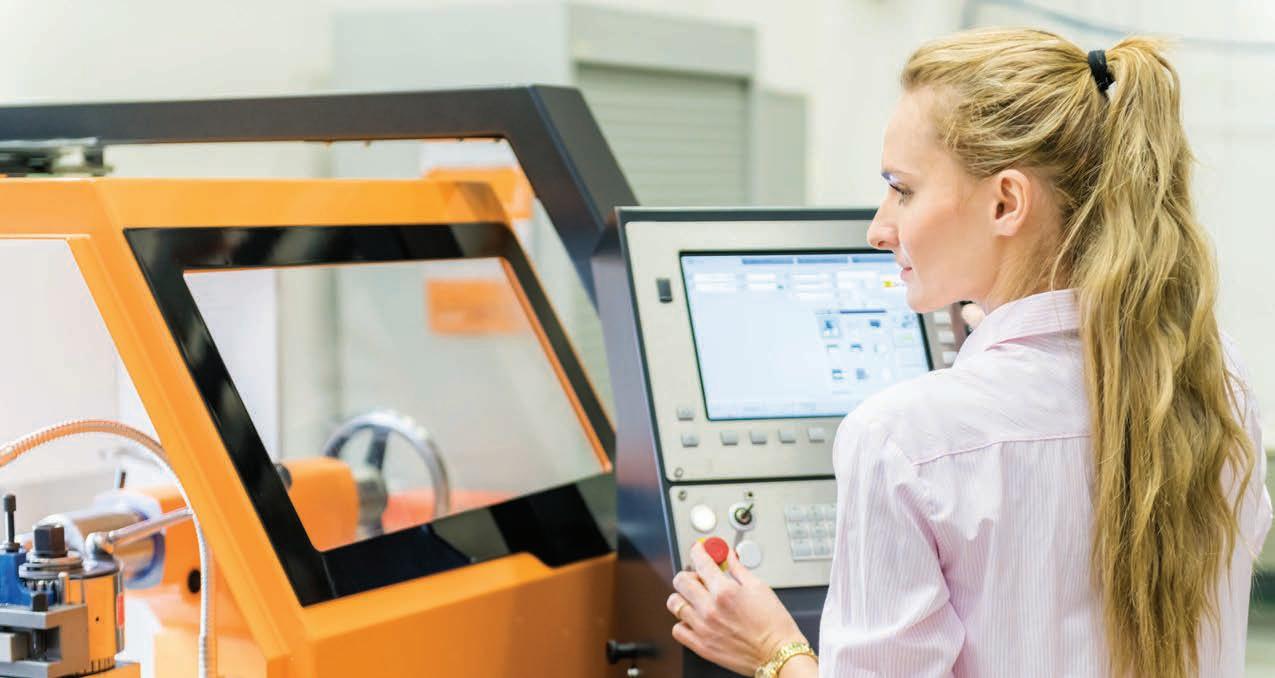Strength and Stretch: Increasing Resilience and Agility in your Manufacturing Supply Chain

Moving Forward from Massive Market Disruption
At the start of 2020, industry experts could not have predicted how much turmoil the manufacturing industry was about to face. The past 18 months have tested supply chains to the limit—and beyond. World events have created unpredictable peaks and troughs in demand, constrained material supplies and impacting where, how quickly and at what cost manufacturers can source ingredients and components.
Now, as the world recuperates, manufacturing is leading the recovery charge. But supply chain disruption continues. And short-term shortages can turn into longer-term turbulence if strategic changes aren’t made.
As an industry, it’s not enough to just get back on track. We need to analyze how COVID-19 and other disruptions broke supply chain set-ups, to stop history from repeating itself down the line.
Now is the time to increase your operational resilience, without compromising on agility. To find the industryleading technologies that will improve your supply chain’s strength and stretch for the future.

Pandemic Pressures Cause Supply Network Cracks
To appreciate why change is essential, we first need to look at how manufacturing’s supply chain values have shifted in the past 18 months.
Historically, sourcing and production have been based on total cost, with manufacturers looking to make efficiencies wherever possible. However, a series of events in 2020/21 seriously impacted logistics.

The biggest disruptor has (of course) been the pandemic. Social isolation affected the cultivation, production and shipment of materials—first in Asia, then the world.
One of the biggest pandemic supply challenges stemmed from the fact that consumer appetite for many products skyrocket at the same time China’s infrastructure stalled.
For example, demand for consumer electronics during the first global lockdown added $100 billion to the industry’s value between 2019 and 2020. But 43% of global electronics components are sourced from China… so you can see how quickly supply and demand became out of sync.
“Market volatility, which has been exacerbated by the COVID-19 pandemic, has elevated the need for agility and flexibility. And increased attention on the environmental impact of supply chains is triggering regionalization and the optimization of flows.” McKinsey
Further Problems Rub Salt into COVID’s Supply Chain Wounds
It’s not just COVID-19 that has tested the manufacturing supply chain since the start of 2020. There have been other local disruptions over the past year and a half that have also contributed to problems with material availability.
For example:
› A major fire at the Renesas Electronics computer chip factory in Japan caused 100 days of production setbacks at the start of the pandemic
› In the first half of 2020, Taiwan’s worst drought in 50 years also affected chipmaking; these shortages interfered with international automotive manufacturing, resulting in GM and Ford both slowing their production rates
› The UK’s Brexit deal caused the biggest drop in manufacturing exports from the UK to the EU since the late 1990s, with 82% of electronics companies admitting to supply chain challenges
› During February 2021, freezing temperatures in Texas affected the state’s electrical supplies, leading to many petrochemical plants being temporarily shut down
› The Ever Given shipping container blocked the Suez Canal for six days in March 2021, causing an estimated 60 days’ disruption to global supply chains
This unfortunate collision of events, many of which were beyond human control, show just how easily global supply networks can break down. So how can manufacturers future-proof your set-up, to minimize the impact of future disruption on output, profit margins and customer relationships?

Adding Strength and Stretch to Your Supply Chain
Most manufacturers recognize that a future-proof supply chain needs two things: the strength to survive market pressures, and the stretch to adapt to market changes.
Gartner research has revealed that 87% of supply chain professionals plan to invest in greater supply chain resilience in the next two years, while 89% want to improve supply chain agility. But what does “improving resilience and agility” actually mean?
To determine the strength and stretch of your supply chain, there are four key questions that manufacturers need to ask of your business, to determine how your supply model needs to evolve:

1. Are You Putting Cost Efficiency on a Pedestal?
Up until now, cost has been king when it comes to supplier choices and logistical models. In fact, 60% of manufacturers admit that their supply chains have been designed for cost-efficiency rather than resilience. This is proven by the fact that Just in Time (JIT) manufacturing is the dominant production model in North America.
However, supply challenges created by the pandemic and other events of the past 18 months have exposed the vulnerability of limiting inventory to run lean. Particularly among manufacturers reliant on offshore sourcing.
Instead of cost driving as the main objective, your manufacturing business needs to consider the benefits of a ‘just in case’ strategy, to ensure customers aren’t left waiting for their order. A supply model that uses a wider network of decisions to increase responsiveness, manage risk and meet demand. Even if you don’t always take the cheapest route.
2. Do You Have the Data to Plan Demand Effectively?
The pandemic showed just how quickly demand patterns change. In the space of a few short weeks, some global industries came to a halt, while there was a surge in sales of electronic equipment and a sudden need for more PPE and medical machinery.
Being able to forecast demand is critical to supply chain effectiveness. And it starts with gaining complete visibility over your entire operation.
Integrating data streams is the first step to strengthening your supply network, as you can make decisions based on insight. For example, you may wish to change inventory holding times for critical components, to avoid being caught short by a sudden surge in demand.
Even if you’ve achieved 360-degree data visibility, the job is far from done. Many manufacturers are taking their supply chain management capabilities further, using artificial intelligence (AI) to analyze information at scale and modelling the impact of supplier choices as the market ebbs and flows.
According to McKinsey, manufacturers who have already adopted AI-enabled supply chain management have, on average, reduced logistics costs by 15%; improved inventory levels by 35%; and increased service levels by 65% compared with slower moving competitors.
Whatever your stage of development, better integration and application of business data can help you to sense market changes earlier, align with your key suppliers and meet changing customer needs.
“As the old saying goes, you can’t manage what you can’t see; an integrated approach is not only a nice to have, its essential.”
Wilhelm Greyling, Executive Director, Supply Chain Solutions, IHS Markit
3. Are You Too Reliant on a Single Supply Source?

The pandemic isn’t the first disaster to disrupt supplies from certain regions; just look back to Japan’s 2011 tsunami to see the impact of one country’s inability to trade at full capacity.
However, because the pandemic affected almost every part of the world, at different times and levels of extremity, global supply chains have been hit harder than ever.
And with new variants causing second waves, impacting rates of recovery, manufacturers have been forced to look at the consequences of either putting all your eggs in one basket, or only having plans A and B in place.
PwC research has revealed that 47% of manufacturers now view putting alternative sourcing options in place as an urgent issue.
For many organizations, greater flexibility means diversifying the regions from which you source. For example, looking at Japan, Taiwan and India rather than relying on China as your main or only region of supply in Asia (although the local disruptions we shared earlier may influence your decision).
Only 21% of business felt confident in their ability to flex sourcing, manufacturing and distribution structures during the height of the coronavirus crisis
Deloitte
Returning to a Nearshore Sourcing Model
It’s not just alternative overseas sources that savvy manufacturers are eyeing up. There’s also been a marked rise in nearshore supply management over the past 18 months.
According to Deloitte, 31% of organizations now plan to move some parts of their production back to the Americas and 44% plan to recalibrate their supply chain towards a regional model. This reflects the change of values away from being purely cost-centric towards a flexible, reliable supply network that supports business productivity and customer satisfaction.
But nearshore sourcing alone won’t fully future-proof your organization. Manufacturers need to look at how you manage and maintain strong relationships with primary and secondary suppliers, to understand both their availability and lead times as market pressures change.
A strong decision-making infrastructure also needs to underpin your supplier choices, so you can put contingency plans in place to mitigate the impact of future disruptions. For example, creating a hierarchy of customers, to help you prioritize who gets access to resources in the event of limited material availability.
“Companies will re-examine their sourcing strategies, seeking through diversity to reduce disruption risk, but that will add complexity. Some supply lines will be shortened as some production is re-established closer to final manufacturers and consumers, but that will involve a trade-off between cost and resilience.”
IHS Markit
4. Do Your Systems and Structures Need an Upgrade?
It’s not just supply chain values that are shifting; the actual structure of supply networks, and the technology used to run them, are also under the microscope.
Most manufacturers currently operate a break/fix model—not just for maintaining assets, but across their approach to business. However, many of the supply chain improvements we’ve discussed are simply not possible without evolving operations beyond a purely reactive approach.
Response times are critical to mitigating the impact of supply network disruption, and that means seeing not just what’s happening now, but understanding what’s likely to happen next.
The more decisions and processes that can be automated within your business, the faster and more efficiently your manufacturing supply chain can operate—without having to compromise on agility.

Many manufacturing organizations are already serious about improving their predictive capabilities. CapGemini research reveals that 48% are putting in significant efforts to implement new automation and analytics technologies to prepare for the next normal.
In fact, McKinsey estimates that US manufacturers need to spend $15-25 billion a year for the next decade upgrading aging plants and equipment if they want to keep pace with market demands.
“COVID-19 has accelerated the drive by manufacturers to digitalize and increase automation to build resilient and truly connected local supply chains that can withstand external shocks.”
PwC
Digital Transformation is Critical to Future Success

But while adding new software will empower manufacturers to see and integrate data, so you can make more effective decisions, increase the speed and flexibility of your response and plan more effectively, technology alone is not the answer.
To fully future-proof your supply chain, manufacturers need to understand the impact digital transformation will have on your workforce—changing your volume of employees, their roles and skillsets.
US manufacturing is currently in a recruitment crisis. And it’s being caused by a skills gap in the market.
Manufacturing businesses need strong digital and analytics capabilities to thrive long-term, so you can make sense of the data being generated across your business and make decisions that optimize sourcing and production. But these aren’t the traditional skills found on the factory floor.
To close the skills gap, manufacturing bodies are now implementing training programs and grassroots recruitment in schools and colleges. And automation technologies are a selling point to prove to new recruits that manufacturing is not just an industry of mindless, repetitive manual processes.
36% of manufacturers are finding it harder to recruit the right talent now than three years ago. Deloitte
Giving Every Stakeholder Access to Critical Information
Before we conclude, it’s worth noting that technology needs to do more than fuel interest from the future manufacturing workforce, who will control supply chain decisions. Digital transformation also needs to connect manufacturing talent and allow them to work from anywhere, at any time.

During the pandemic, for the first time in manufacturing’s history, the factory floor extended beyond four walls. More employees than ever worked remotely to enable social distancing.
This hybrid model, in which some staff worked remotely at least some of the time, supporting those physically within the business, is likely to continue. And it will open the door to more scenarios where teams are working in partnership across multiple locations or being managed by someone who isn’t always present beside them.
As a result, your digital transformation strategy needs to include cloud-based collaboration tools, to overcome physical manufacturing challenges. Software solutions that will help every stakeholder in your supply network work closely together, to get components to your production line as quickly and cost-efficiently as possible.
Increasing Supply Chain Strength and Stretch Using ERP Software
Ultimately, supply is the nerve center of manufacturing. If you can’t get hold of raw materials or ingredients, your production line comes to a standstill. And making sure inventory availability never holds back output relies on increasing your supply chain strength (resilience) and stretch (agility).
But as the questions we’ve asked demonstrate, innovating your supply network means more than just having the ability to find resources quickly.

The future supply chain needs to be closely integrated with manufacturing operations, to ensure that parts, processes and people work together effectively. Getting high quality end goods to the customer in a timely manner.
Investing in enterprise resource planning (ERP) software is the key to delivering this functionality ASAP.
“A
Combining ERP Software and Smart Strategies to FutureProof Your Supply Model
Manufacturing ERP software moves all your operations into the cloud, connecting everyone in your business through one solution. So your entire workforce can see and react to what’s going on in real-time.

It creates accurate visibility of your needs, by matching real-time inventory levels with scheduling. So you can plan resources based on who and what will be available.
And it enables your team to build (and document) strong customer and supplier relationships, by predicting the impact of availability and lead times based on market events. So you can choose alternative suppliers to keep production running, even in times of difficulty.
But while ERP adds immense value, it’s not just a case of putting this software in place and waiting for the magic to happen. It needs to do more than just automate supply chain operations.
To maximize value, ERP software should provide the catalyst for you to redefine your structures and processes, re-energize your workforce, increase your flexibility, and drive smart business strategies.
Aptean: building specific solutions for your business
In the world of enterprise resource planning software, we are the experts.
At Aptean, we know our clients’ industries inside and out. And every day, we put this deep knowledge to work by creating hyper-niche ERP software solutions that enhance your operational efficiency—and drive better results for your business.
As by-your-side partners, we provide the critical support you need, every step of the way. That’s why companies like yours rely on us to help them streamline, save and scale.
Are You Ready to Learn More?
We’d love to show you how to get Ready for What’s Next, Now®
Contact us at info@aptean.com or visit www.aptean.com
About Aptean
Aptean is one of the world’s leading providers of purpose-built, industry-specific software that helps manufacturers and distributors effectively run and grow their businesses. With both cloud and on-premise deployment options, Aptean’s products, services and unmatched expertise help businesses of all sizes to be Ready for What’s Next Now®. Aptean is headquartered in Alpharetta, Georgia and has offices in North America, Europe and Asia-Pacific.
To learn more about Aptean and the markets we serve, visit www.aptean.com.

